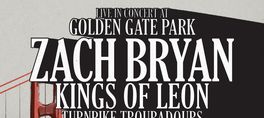Influential Bay Area reductive painter David Simpson presents a series of gem-like paintings produced on an intimate scale. Employing the use of interference paints, acrylic pigments made from titanium-coated mica particles, these monochromatic paintings transform significantly based on light conditions and viewer perspective, achieving a highly refined presence and prompting a meditative and physical response to the work. When asked to discuss the paintings, David often responds by addressing the weather and the abundance of subtle and continual shifts of light and atmosphere in the Bay area that so affects the work.
Simpson continues to dazzle viewers with his impeccable technique and the stunning surface quality of his work. For his seventh solo exhibition with Haines Gallery, Simpson has created 19 small, never before seen, 6x6 inch paintings on canvas, 15 of which are made with interference paints in shades of gold, blue, copper, green, and red. The remaining four works are rendered in pearlescent black and white and iridescent metallics. One-syllable titles for each of the works together form a collection of short, whimsical poems that speak to Simpson's long interest in the connection between the written word and his experimental paintings.
Simpson has been working with interference paints since the late 1980s, successfully experimenting with their monochromatic potential. His process of applying up to 30 layers of paint, stopping periodically to sand or smooth out with a blade, creates an incredible sense of depth while maintaining traces of the artist's hand on the surface. These traces are important to Simpson, who defines painting as something in which the artist has left his physical presence: "I'm a painter, not a manufacturer. One of the things I don't like about mechanically made artworks is that you don't see the artist, it's impersonal. I like the old fashioned idea that what you are seeing is the artist's hand and eye at work."
Simpson has worked and lived in the Bay Area since the 1950s. He has exhibited in Italy, Spain, Switzerland, France, Japan, Korea, and extensively in the United States. He is represented in numerous major collections including Collezione Panza di Biumo in Italy; the Museo Cantonale D'Arte in Switzerland; the Museum of Modern Art, New York; San Francisco Museum of Modern Art; Philadelphia Museum of Art; Seattle Museum of Art; National Collection of Fine Art, Washington, DC; John D. and Catharine T. MacArthur Foundation, Chicago; and Museo d'Arte Moderna, Trento, Italy.
Image Credit: David Simpson, Ice Age, 1988
Acrylic on canvas | 48 x 48 inches | HG16523
show less
Simpson continues to dazzle viewers with his impeccable technique and the stunning surface quality of his work. For his seventh solo exhibition with Haines Gallery, Simpson has created 19 small, never before seen, 6x6 inch paintings on canvas, 15 of which are made with interference paints in shades of gold, blue, copper, green, and red. The remaining four works are rendered in pearlescent black and white and iridescent metallics. One-syllable titles for each of the works together form a collection of short, whimsical poems that speak to Simpson's long interest in the connection between the written word and his experimental paintings.
Simpson has been working with interference paints since the late 1980s, successfully experimenting with their monochromatic potential. His process of applying up to 30 layers of paint, stopping periodically to sand or smooth out with a blade, creates an incredible sense of depth while maintaining traces of the artist's hand on the surface. These traces are important to Simpson, who defines painting as something in which the artist has left his physical presence: "I'm a painter, not a manufacturer. One of the things I don't like about mechanically made artworks is that you don't see the artist, it's impersonal. I like the old fashioned idea that what you are seeing is the artist's hand and eye at work."
Simpson has worked and lived in the Bay Area since the 1950s. He has exhibited in Italy, Spain, Switzerland, France, Japan, Korea, and extensively in the United States. He is represented in numerous major collections including Collezione Panza di Biumo in Italy; the Museo Cantonale D'Arte in Switzerland; the Museum of Modern Art, New York; San Francisco Museum of Modern Art; Philadelphia Museum of Art; Seattle Museum of Art; National Collection of Fine Art, Washington, DC; John D. and Catharine T. MacArthur Foundation, Chicago; and Museo d'Arte Moderna, Trento, Italy.
Image Credit: David Simpson, Ice Age, 1988
Acrylic on canvas | 48 x 48 inches | HG16523
Influential Bay Area reductive painter David Simpson presents a series of gem-like paintings produced on an intimate scale. Employing the use of interference paints, acrylic pigments made from titanium-coated mica particles, these monochromatic paintings transform significantly based on light conditions and viewer perspective, achieving a highly refined presence and prompting a meditative and physical response to the work. When asked to discuss the paintings, David often responds by addressing the weather and the abundance of subtle and continual shifts of light and atmosphere in the Bay area that so affects the work.
Simpson continues to dazzle viewers with his impeccable technique and the stunning surface quality of his work. For his seventh solo exhibition with Haines Gallery, Simpson has created 19 small, never before seen, 6x6 inch paintings on canvas, 15 of which are made with interference paints in shades of gold, blue, copper, green, and red. The remaining four works are rendered in pearlescent black and white and iridescent metallics. One-syllable titles for each of the works together form a collection of short, whimsical poems that speak to Simpson's long interest in the connection between the written word and his experimental paintings.
Simpson has been working with interference paints since the late 1980s, successfully experimenting with their monochromatic potential. His process of applying up to 30 layers of paint, stopping periodically to sand or smooth out with a blade, creates an incredible sense of depth while maintaining traces of the artist's hand on the surface. These traces are important to Simpson, who defines painting as something in which the artist has left his physical presence: "I'm a painter, not a manufacturer. One of the things I don't like about mechanically made artworks is that you don't see the artist, it's impersonal. I like the old fashioned idea that what you are seeing is the artist's hand and eye at work."
Simpson has worked and lived in the Bay Area since the 1950s. He has exhibited in Italy, Spain, Switzerland, France, Japan, Korea, and extensively in the United States. He is represented in numerous major collections including Collezione Panza di Biumo in Italy; the Museo Cantonale D'Arte in Switzerland; the Museum of Modern Art, New York; San Francisco Museum of Modern Art; Philadelphia Museum of Art; Seattle Museum of Art; National Collection of Fine Art, Washington, DC; John D. and Catharine T. MacArthur Foundation, Chicago; and Museo d'Arte Moderna, Trento, Italy.
Image Credit: David Simpson, Ice Age, 1988
Acrylic on canvas | 48 x 48 inches | HG16523
read more
Simpson continues to dazzle viewers with his impeccable technique and the stunning surface quality of his work. For his seventh solo exhibition with Haines Gallery, Simpson has created 19 small, never before seen, 6x6 inch paintings on canvas, 15 of which are made with interference paints in shades of gold, blue, copper, green, and red. The remaining four works are rendered in pearlescent black and white and iridescent metallics. One-syllable titles for each of the works together form a collection of short, whimsical poems that speak to Simpson's long interest in the connection between the written word and his experimental paintings.
Simpson has been working with interference paints since the late 1980s, successfully experimenting with their monochromatic potential. His process of applying up to 30 layers of paint, stopping periodically to sand or smooth out with a blade, creates an incredible sense of depth while maintaining traces of the artist's hand on the surface. These traces are important to Simpson, who defines painting as something in which the artist has left his physical presence: "I'm a painter, not a manufacturer. One of the things I don't like about mechanically made artworks is that you don't see the artist, it's impersonal. I like the old fashioned idea that what you are seeing is the artist's hand and eye at work."
Simpson has worked and lived in the Bay Area since the 1950s. He has exhibited in Italy, Spain, Switzerland, France, Japan, Korea, and extensively in the United States. He is represented in numerous major collections including Collezione Panza di Biumo in Italy; the Museo Cantonale D'Arte in Switzerland; the Museum of Modern Art, New York; San Francisco Museum of Modern Art; Philadelphia Museum of Art; Seattle Museum of Art; National Collection of Fine Art, Washington, DC; John D. and Catharine T. MacArthur Foundation, Chicago; and Museo d'Arte Moderna, Trento, Italy.
Image Credit: David Simpson, Ice Age, 1988
Acrylic on canvas | 48 x 48 inches | HG16523
show less
Date/Times:
Haines Gallery
1 Upcoming Events
2 Marina Boulevard, Building C, San Francisco, CA 94123
The Best Events
Every Week in Your Inbox
From Our Sponsors
UPCOMING EVENTS
Great suggestion! We'll be in touch.
Event reviewed successfully.









